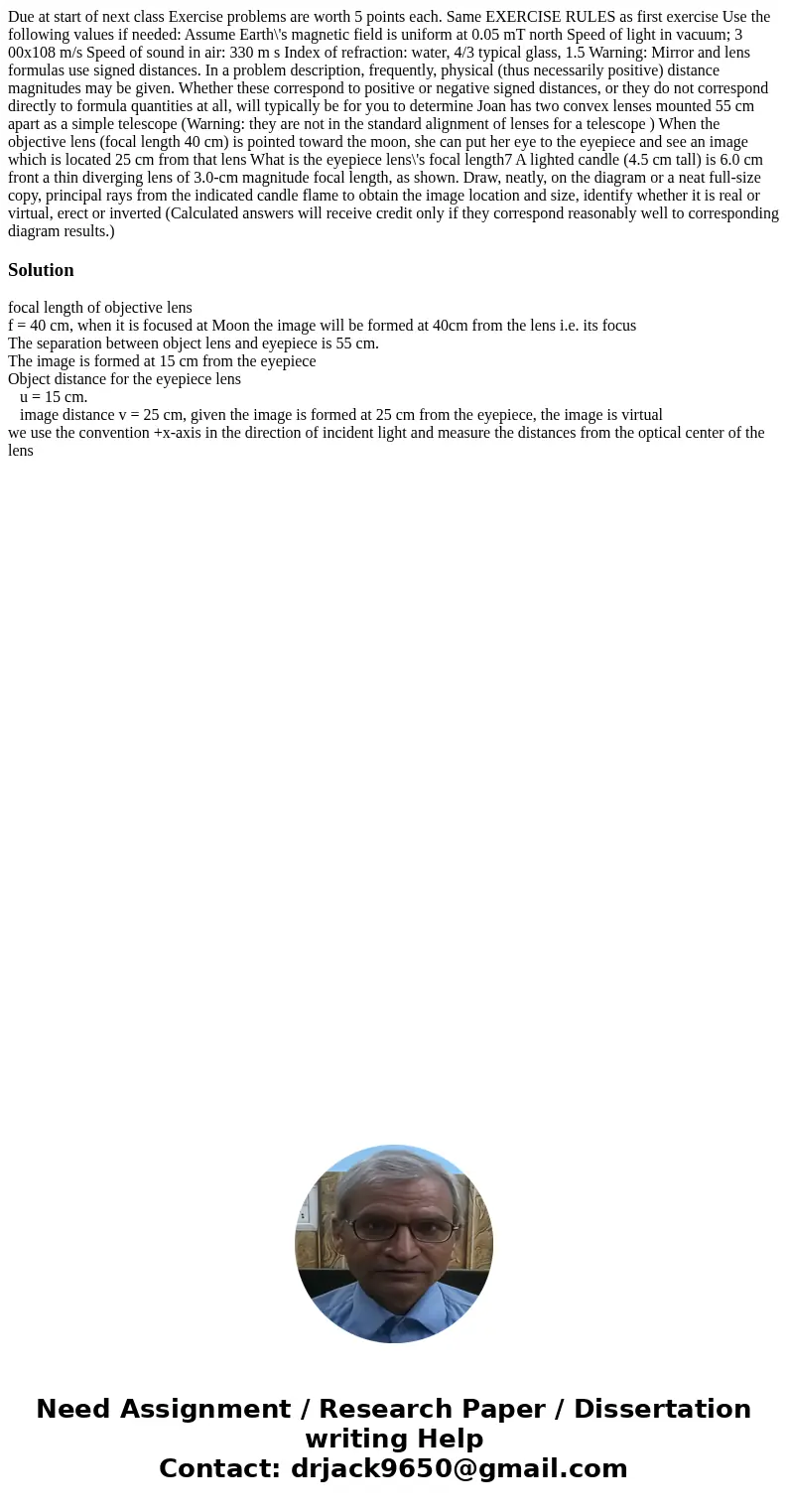Due at start of next class Exercise problems are worth 5 poi
Due at start of next class Exercise problems are worth 5 points each. Same EXERCISE RULES as first exercise Use the following values if needed: Assume Earth\'s magnetic field is uniform at 0.05 mT north Speed of light in vacuum; 3 00x108 m/s Speed of sound in air: 330 m s Index of refraction: water, 4/3 typical glass, 1.5 Warning: Mirror and lens formulas use signed distances. In a problem description, frequently, physical (thus necessarily positive) distance magnitudes may be given. Whether these correspond to positive or negative signed distances, or they do not correspond directly to formula quantities at all, will typically be for you to determine Joan has two convex lenses mounted 55 cm apart as a simple telescope (Warning: they are not in the standard alignment of lenses for a telescope ) When the objective lens (focal length 40 cm) is pointed toward the moon, she can put her eye to the eyepiece and see an image which is located 25 cm from that lens What is the eyepiece lens\'s focal length7 A lighted candle (4.5 cm tall) is 6.0 cm front a thin diverging lens of 3.0-cm magnitude focal length, as shown. Draw, neatly, on the diagram or a neat full-size copy, principal rays from the indicated candle flame to obtain the image location and size, identify whether it is real or virtual, erect or inverted (Calculated answers will receive credit only if they correspond reasonably well to corresponding diagram results.)
Solution
focal length of objective lens
f = 40 cm, when it is focused at Moon the image will be formed at 40cm from the lens i.e. its focus
The separation between object lens and eyepiece is 55 cm.
The image is formed at 15 cm from the eyepiece
Object distance for the eyepiece lens
u = 15 cm.
image distance v = 25 cm, given the image is formed at 25 cm from the eyepiece, the image is virtual
we use the convention +x-axis in the direction of incident light and measure the distances from the optical center of the lens

 Homework Sourse
Homework Sourse